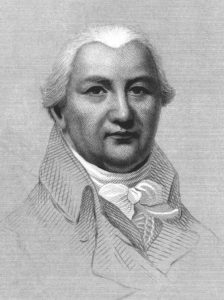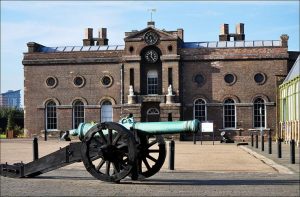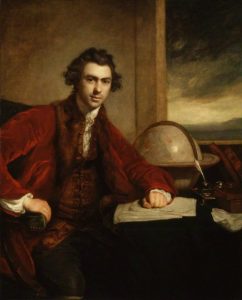It is difficult to imagine in 18th century England how a lad working in the coal mines could become a member of the Royal Society and one of the most celebrated British mathematicians of his time. And yet this is the case of Charles Hutton. As a boy he had shown a talent for languages and mathematics and, for a time, he stood in for the country schoolmaster in front of his peers, but his environment seemed to have destined him for the mines. However, it was precisely his ability as a teacher that enabled him to rise from the mines and begin to carve out a career in Newcastle.

In some respects, rather than a brilliant mathematician, he seems to have been a brilliant teacher of mathematics. His The Schoolmasters Guide, published in 1764, is the first work that brought him fame, and is presented as a safe and accessible guide for beginners in arithmetic. Hutton was a lover of calculus, and strove to present the rudiments in simplicity, while at the same time trying to convey his love of numbers. Of the same style is his Treatise on Mensuration both in Theory and Practice, where he sets out to treat in an encyclopaedic way everything related to geometry and its practical use. In this kind of works we can see the wide range covered by mathematics in the 18th century: the relations between trigonometry and fortification, the calculation for artillery and mechanics, the study of mathematical instruments (pendulums, terrestrial and celestial globes), the calculation of astronomical positions for the elaboration of nautical almanacs, etc.
Hutton would deal with these subjects in the position he held for the longest period of his life: that of professor at the Woolwich Military Academy, for his professional career was not limited to that of a provincial schoolmaster and textbook writer. This academy, located in south-east London, operated until the Second World War and was also the home of the famous mathematician Sylvester. It was at this institution that Hutton began his ambitious A Mathematical and Philosophical Dictionary, a work he used to promote mathematics, something he took up as a personal cause throughout his life.

However, not being in the City, he felt somewhat isolated, and he was keen to make new contacts. Thanks to this attitude he developed a fruitful friendship with the Astronomer Royal at Greenwich Observatory, Nevil Maskelyne, who involved him in numerous projects, including the calculation of longitude at sea, in order to dispense with Harrison’s expensive chronometers, and the measurement of gravitational attraction before the Cavendish balance. For these merits he joined the Royal Society and received the Copley Medal for a paper on ballistics. However, it was not all honours and friendly welcomes at the Royal Society, as he failed to become ordinary secretary of the Society, due to his bitter enmity towards the president, Joseph Banks. It seems that Hutton’s provincial accent and rustic manner did not make him a presentable character in Banks’s eyes. But there was another reason that was no secret: Banks was a naturalist who particularly disliked mathematics, and he made no secret of it, regarding it as a mere tool and detesting complicated calculations. He thought that society meetings should be between aristocrats and gentry with exotic interests that would generate polite discussions on curious but accessible topics. This obviously caused a division within the Society, between those members who wished to engage in more technical work, such as Maskelyne and Hutton himself, and Banks and his followers.

The conflict ended with Hutton’s dismissal, but his contributions to the dissemination of mathematics, to the mathematical training of military engineers and to mathematical education in general, remained for a long time, changing the curriculum of many British schools throughout the 18th century and making mathematics a part of British culture.
References
Benjamin Wahdhaugh, Gunpowder & Geometry, ed. William Collins, London, 2019.

Leave a Reply